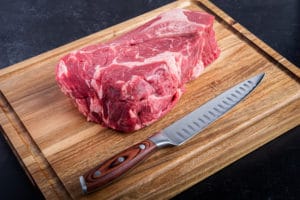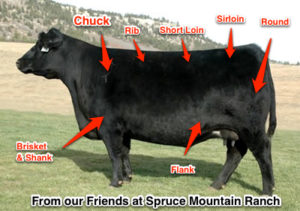
Navigating the world of beef cuts can be overwhelming. With some cuts ideal for grilling, others perfect for oven roasting, and a few that require slow braising, it’s easy to feel confused. In Part 1 of this series, we get into the Loin and Rib cuts. Today, we turn our attention to a personal favorite: Beef Chuck.
What is the Beef Chuck?
Essentially the cow’s shoulder, the Beef Chuck is a large network of strong muscles that steer and maneuver the majority of the animals weight. These hard working muscles are generally not tender enough to grill, but thanks to their generous marbling and collagenous connective tissue, they’re the best tasting of beef’s cuts and a fabulous value!
Beef Chuck Cooking Tips
To unlock the true potential of beef chuck, slow braising is the key. This involves pot roasting—a method that entails slow cooking with liquid and a lid. By employing this technique, the collagen within these hardworking muscles breaks down, resulting in tender and mouthwatering shreds of meat swimming in flavorful jus.
For optimal results, begin by browning the chuck in a Dutch oven. Then, add a delightful combination of wine, water, and herbs. Cook it at a temperature range of 225-300°F or, if possible, simmer it slowly on your stove top. This process typically takes around 3-5 hours until the chuck is exquisitely tender and falls apart effortlessly.
An Abundance of Shoulder Cuts
The shoulder section boasts an array of cuts that are worth exploring. While we cannot list them all, we’ll introduce you to some of the most popular options:
- Boneless Chuck Roast: This versatile cut shines as the ultimate Pot Roast. Alternatively, you can cut it into cubes for hearty beef stew or chili.
- Beef Brisket: With its exceptional flavor and beautiful slices, beef brisket is perfect for Braising Roasts and a delightful addition to BBQ beef.
- Beef Shanks: Utilize beef shanks to create the most exquisite stocks and soups, infusing them with rich and savory goodness.
- Short Ribs or Flanken Ribs: If you crave bold and luxurious flavors, opt for braised short ribs or their smaller counterparts, flanken ribs.
Tantalizing Chuck Steaks
Hidden within the chuck are small cuts that require minimal effort and deliver steak-like tenderness. Although they may be challenging to butcher, we’ve skillfully extracted them and incorporated them into our selection of High-Value Steaks.
Among our favorites is the Chuck Eye, closely followed by the Chuck Tender, Flat Iron, and the Sierra Cut. Learn more about these and other lesser known steaks here.
Thank you for joining us on this flavorful journey. In the next installment, we will explore the Beef Round or hind leg cuts, completing this educational series. Don’t forget to subscribe and share this blog post with your fellow food enthusiasts. Buon Appetito – Salute!
Follow us on Facebook!
Comments are closed.

